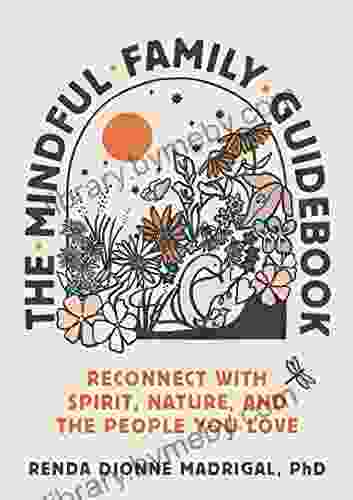Why Can You Just Give Me The Number? A Comprehensive Guide to Using Probabilistic Thinking to Make Better Decisions


In today's world, we are constantly bombarded with information. From the news to social media to our own personal experiences, it can be difficult to know what to believe and what to ignore. This is especially true when it comes to making decisions.
4.7 out of 5
| Language | : | English |
| File size | : | 2776 KB |
| Text-to-Speech | : | Enabled |
| Screen Reader | : | Supported |
| Enhanced typesetting | : | Enabled |
| Word Wise | : | Enabled |
| Print length | : | 215 pages |
| Lending | : | Enabled |
How do we know if we're making the right choice? How can we be sure that we're not being misled?
The answer is to use probabilistic thinking. Probabilistic thinking is a way of thinking about the world that takes into account uncertainty. It allows us to make decisions based on the best available information, even when we don't have all the facts.
In this book, you will learn how to use probabilistic thinking to make better decisions in all areas of your life. You will learn how to:
* Assess the likelihood of events * Make decisions under uncertainty * Communicate your findings to others
Probabilistic thinking is a powerful tool that can help you make better decisions, avoid costly mistakes, and live a more informed life.
Chapter 1: What is Probabilistic Thinking?
Probabilistic thinking is a way of thinking about the world that takes into account uncertainty. It is based on the idea that there is no such thing as certainty, and that all events have some degree of uncertainty associated with them.
Probabilistic thinking is often contrasted with deterministic thinking, which is the belief that events are either certain or uncertain. Deterministic thinkers believe that there is one right answer to every question, and that if we just have enough information, we can always find it.
Probabilistic thinkers, on the other hand, believe that there is no such thing as a right answer. They believe that all decisions are made under uncertainty, and that the best we can do is to make the best decision based on the information we have available.
Probabilistic thinking is a more realistic way of thinking about the world than deterministic thinking. It allows us to make better decisions by taking into account the uncertainty that is inherent in all events.
Chapter 2: How to Assess the Likelihood of Events
The first step to probabilistic thinking is to be able to assess the likelihood of events. This can be done using a variety of methods, including:
* Historical data: If you have historical data on an event, you can use this data to estimate the likelihood of the event happening again. For example, if you know that your favorite team has won 60% of their games in the past, you can estimate that they have a 60% chance of winning their next game. * Expert opinion: If you don't have historical data on an event, you can consult with an expert to get their opinion on the likelihood of the event happening. For example, if you are considering investing in a new stock, you can consult with a financial advisor to get their opinion on the likelihood of the stock increasing in value. * Subjective probability: If you don't have historical data or expert opinion to rely on, you can use your own subjective judgment to estimate the likelihood of an event happening. For example, if you are trying to decide whether or not to take a new job, you can use your own judgment to estimate the likelihood of the job being a good fit for you.
Once you have assessed the likelihood of an event, you can use this information to make better decisions. For example, if you know that your favorite team has a 60% chance of winning their next game, you can decide whether or not to bet on them. If you know that a new investment has a 70% chance of increasing in value, you can decide whether or not to invest in it.
Chapter 3: How to Make Decisions Under Uncertainty
Once you have assessed the likelihood of events, you can use this information to make decisions under uncertainty. There are a variety of different decision-making strategies that you can use, but the most common strategy is to use expected value.
Expected value is the average outcome of a decision, taking into account the likelihood of each possible outcome. To calculate the expected value of a decision, you simply multiply the likelihood of each possible outcome by the value of that outcome, and then add up the results.
For example, let's say you are trying to decide whether or not to bet on your favorite team. You know that your team has a 60% chance of winning and a 40% chance of losing. If you bet $10 on your team, you will win $10 if they win and lose $10 if they lose.
The expected value of this decision is:
(0.6 * $10) + (0.4 * -$10) = $6
This means that if you bet on your team 100 times, you can expect to win $60 on average. Of course, there is no guarantee that you will win every time, but the expected value gives you a good idea of what you can expect to happen over the long run.
Expected value is a powerful tool that can help you make better decisions under uncertainty. By taking into account the likelihood of each possible outcome, expected value can help you identify the decision that is most likely to lead to the best outcome.
Chapter 4: How to Communicate Your Findings to Others
Once you have used probabilistic thinking to make a decision, you need to be able to communicate your findings to others. This can be a challenge, especially if your audience is not familiar with probabilistic thinking.
When communicating your findings, it is important to be clear and concise. You should also use visual aids, such as graphs and charts, to help your audience understand your findings.
It is also important to be honest about the uncertainty associated with your findings. Don't pretend to know more than you do. Instead, be open about the assumptions you made and the limitations of your analysis.
By being clear, concise, and honest, you can increase the likelihood that your audience will understand and accept your findings.
Probabilistic thinking is a powerful tool that can help you make better decisions, avoid costly mistakes, and live a more informed life. By taking into account uncertainty, probabilistic thinking allows you to make decisions that are based on the best available information, even when you don't have all the facts.
In this book, you have learned the basics of probabilistic thinking. You have learned how to assess the likelihood of events, make decisions under uncertainty, and communicate your findings to others.
Now it is up to you to use this knowledge to make better decisions in all areas of your life. By using probabilistic thinking, you
4.7 out of 5
| Language | : | English |
| File size | : | 2776 KB |
| Text-to-Speech | : | Enabled |
| Screen Reader | : | Supported |
| Enhanced typesetting | : | Enabled |
| Word Wise | : | Enabled |
| Print length | : | 215 pages |
| Lending | : | Enabled |
Do you want to contribute by writing guest posts on this blog?
Please contact us and send us a resume of previous articles that you have written.
 Book
Book Novel
Novel Page
Page Chapter
Chapter Text
Text Story
Story Genre
Genre Reader
Reader Library
Library Paperback
Paperback E-book
E-book Magazine
Magazine Newspaper
Newspaper Paragraph
Paragraph Sentence
Sentence Bookmark
Bookmark Shelf
Shelf Glossary
Glossary Bibliography
Bibliography Foreword
Foreword Preface
Preface Synopsis
Synopsis Annotation
Annotation Footnote
Footnote Manuscript
Manuscript Scroll
Scroll Codex
Codex Tome
Tome Bestseller
Bestseller Classics
Classics Library card
Library card Narrative
Narrative Biography
Biography Autobiography
Autobiography Memoir
Memoir Reference
Reference Encyclopedia
Encyclopedia Robert Sears Md
Robert Sears Md Michael Holley
Michael Holley Lori Rea
Lori Rea Linda Nochlin
Linda Nochlin Veronica O Keane
Veronica O Keane Marshal Shlafer
Marshal Shlafer Stuart Ritchie
Stuart Ritchie Mark Lehner
Mark Lehner Mick Elliott
Mick Elliott Lauren Bacall
Lauren Bacall Maria Thompson Daviess
Maria Thompson Daviess Kim Loraine
Kim Loraine Susan Rice
Susan Rice Suzuki Aika
Suzuki Aika Walter Harding
Walter Harding Megan Cooley Peterson
Megan Cooley Peterson Sherry Thomas
Sherry Thomas Peter Walsh
Peter Walsh Yvonne Jones
Yvonne Jones Phil Moody
Phil Moody
Light bulbAdvertise smarter! Our strategic ad space ensures maximum exposure. Reserve your spot today!

 Fernando PessoaHow Someone Without Experience Can Start An Online Marketing Business From...
Fernando PessoaHow Someone Without Experience Can Start An Online Marketing Business From...
 Terence NelsonDiscover Endless Business Opportunities: No Capital Ecommerce for Beginner...
Terence NelsonDiscover Endless Business Opportunities: No Capital Ecommerce for Beginner...
 August HayesAn Enchanting Easter Adventure with Valerie Fentress's 'An Easter Bunny Tale'
August HayesAn Enchanting Easter Adventure with Valerie Fentress's 'An Easter Bunny Tale'
 Ignacio HayesDiscover the Secrets to Crafting mouthwatering Burgers That Will tantalize...
Ignacio HayesDiscover the Secrets to Crafting mouthwatering Burgers That Will tantalize... Holden BellFollow ·17.1k
Holden BellFollow ·17.1k John ParkerFollow ·16.2k
John ParkerFollow ·16.2k Enrique BlairFollow ·19k
Enrique BlairFollow ·19k Grant HayesFollow ·3.5k
Grant HayesFollow ·3.5k Felipe BlairFollow ·10.8k
Felipe BlairFollow ·10.8k Robert ReedFollow ·17.5k
Robert ReedFollow ·17.5k Clay PowellFollow ·13.4k
Clay PowellFollow ·13.4k Shane BlairFollow ·15.7k
Shane BlairFollow ·15.7k

 Clay Powell
Clay PowellDiscover the Enigmatic Beauty and Profound Meaning in...
An Exploration of Emptiness, Fulfillment,...

 Brenton Cox
Brenton CoxThe Life and Times of the Woman Who Changed Abortion: The...
Norma McCorvey, the woman known...

 Darius Cox
Darius CoxBest 60 Short Hairstyles For Women With Thick Hair: A...
Embracing the beauty of...

 John Parker
John ParkerThe Healthy Pregnancy Book: Your Essential Guide to a...
Pregnancy is a...
4.7 out of 5
| Language | : | English |
| File size | : | 2776 KB |
| Text-to-Speech | : | Enabled |
| Screen Reader | : | Supported |
| Enhanced typesetting | : | Enabled |
| Word Wise | : | Enabled |
| Print length | : | 215 pages |
| Lending | : | Enabled |








